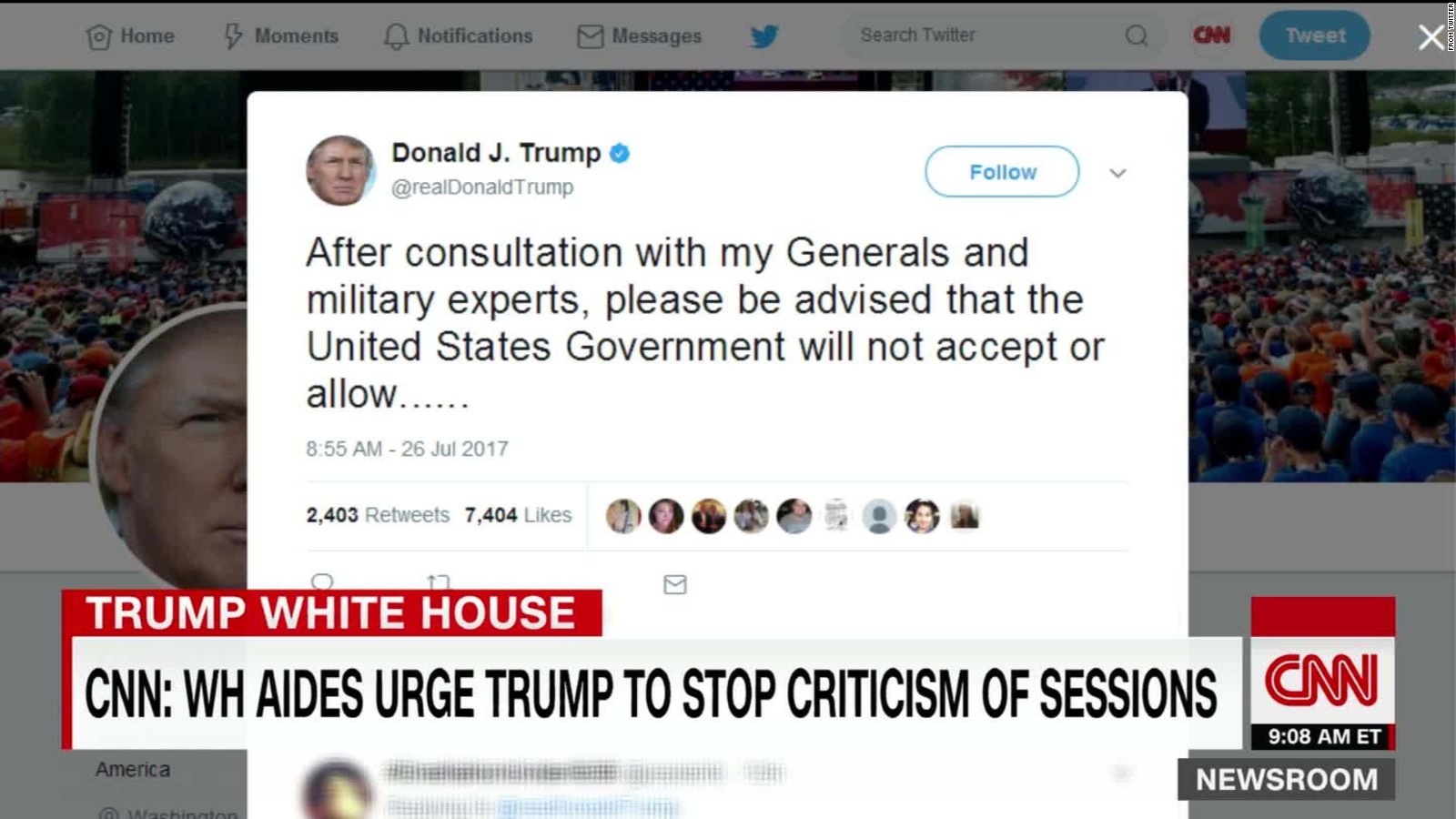The Transgender Military Ban: Dissecting Trump's Shifting Statements

Table of Contents
The Initial Announcement and Public Reaction
On July 26, 2017, President Trump announced via Twitter a ban on transgender individuals serving in the military. His stated rationale centered on concerns about medical costs and military readiness, arguing that transgender service members posed a burden on the armed forces. This announcement immediately ignited a firestorm of public reaction.
- Military Personnel: Many transgender service members expressed fear and uncertainty about their futures, facing potential discharge and loss of benefits.
- LGBTQ+ Advocates: Organizations like the Human Rights Campaign (HRC) and GLAAD strongly condemned the ban, citing it as discriminatory and harmful. Large-scale protests and demonstrations ensued.
- Political Figures: The ban drew sharp criticism from Democrats and some Republicans, who argued it violated principles of equality and non-discrimination. Legal challenges were swiftly filed.
The legal challenges that immediately followed included several lawsuits filed by various organizations and individual service members, arguing that the ban violated the constitutional rights of transgender individuals to equal protection under the law. These lawsuits became a crucial part of the ongoing battle surrounding the Transgender Military Ban.
Shifting Statements and Contradictory Messaging
Throughout his presidency, Trump's statements regarding the transgender military ban were marked by significant inconsistencies. While initially presenting a firm stance, his subsequent remarks often contradicted his previous pronouncements.
- Example 1: Initially, the ban was presented as a definitive policy. Later statements suggested flexibility or a willingness to reconsider under certain conditions.
- Example 2: Public statements sometimes contradicted internal memos or communications from the Department of Defense, showcasing a lack of clear and consistent messaging on the policy.
- Example 3: Trump's statements often shifted depending on the political climate and media coverage, suggesting a strategic approach to the issue rather than a fixed policy position.
These shifting statements likely resulted from a combination of factors, including political maneuvering to appeal to different segments of the electorate, pressure from both supporters and opponents, and internal disagreements within the Trump administration regarding the ban's implementation and long-term effects on LGBTQ+ rights and military policy. Media coverage played a significant role in amplifying these inconsistencies and fueling public debate.
The Legal Battles and Their Outcomes
The Transgender Military Ban faced numerous legal challenges, traversing various levels of the judiciary. Lower courts issued several injunctions blocking the implementation of the ban, highlighting the legal complexities of the issue and the ongoing struggle for judicial review.
- Case 1: (cite specific case) resulted in a ruling against the ban, citing violations of equal protection.
- Case 2: (cite specific case) saw a different outcome initially, but this was later overturned on appeal.
- Supreme Court Involvement: While the Supreme Court did not directly rule on the constitutionality of the ban during the Trump administration, lower court decisions effectively blocked its full implementation.
These legal battles significantly shaped the policy’s fate, demonstrating the power of judicial oversight in safeguarding the rights of transgender individuals and preventing the enforcement of discriminatory policies. The impact of these court rulings underscored the crucial role of the judicial branch in addressing the Transgender Military Ban.
The Biden Administration's Response and Current Status
Upon taking office, the Biden administration swiftly reversed the Trump-era Transgender Military Ban. This reversal marked a significant shift in military policy, affirming the right of transgender individuals to serve openly in the armed forces. The current policy prioritizes inclusivity and non-discrimination, ensuring that transgender individuals are treated with the same respect and dignity as their cisgender counterparts. This change reflects a broader societal shift towards greater acceptance and inclusion of LGBTQ+ individuals in all aspects of life.
Conclusion: Understanding the Legacy of the Transgender Military Ban
The Transgender Military Ban, and the fluctuating statements surrounding it during the Trump administration, highlight the ongoing struggle for LGBTQ+ equality and inclusion within military institutions. The legal battles, the shifting public discourse, and the eventual policy reversal underscore the complexities of balancing national security concerns with fundamental human rights. Understanding this historical context is critical to advancing inclusivity in the military and beyond.
Learn more about the transgender military ban, stay informed on LGBTQ+ rights, and advocate for inclusive military policies. Your voice matters in shaping a more equitable and just future for all.

Featured Posts
-
 Racial Bias In Fatal Stabbing Woman Charged With Murder
May 10, 2025
Racial Bias In Fatal Stabbing Woman Charged With Murder
May 10, 2025 -
 Jeanine Pirro And The Alleged Drunk Episode Implications For Her Dc Appointment
May 10, 2025
Jeanine Pirro And The Alleged Drunk Episode Implications For Her Dc Appointment
May 10, 2025 -
 Did Us Economic Policies Affect Elon Musks Net Worth And Teslas Success
May 10, 2025
Did Us Economic Policies Affect Elon Musks Net Worth And Teslas Success
May 10, 2025 -
 Iron Ore Falls As China Curbs Steel Output Market Impact Analysis
May 10, 2025
Iron Ore Falls As China Curbs Steel Output Market Impact Analysis
May 10, 2025 -
 Ras Baraka Arrested At Ice Detention Center What We Know
May 10, 2025
Ras Baraka Arrested At Ice Detention Center What We Know
May 10, 2025
